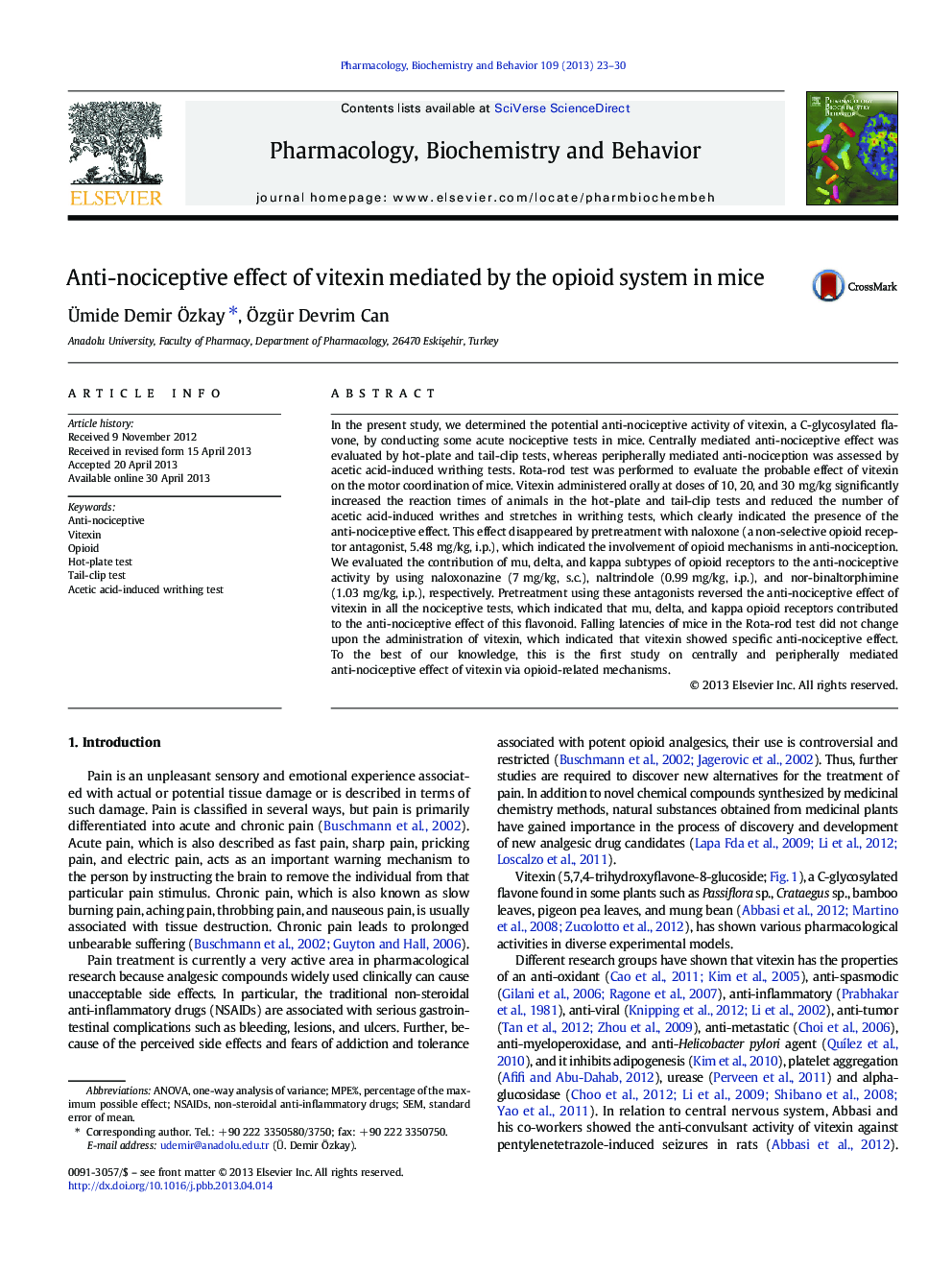| Article ID | Journal | Published Year | Pages | File Type |
|---|---|---|---|---|
| 2013027 | Pharmacology Biochemistry and Behavior | 2013 | 8 Pages |
•Vitexin is a C-glycosylated flavone found in some medicinal plants.•Vitexin caused anti-nociceptive effect in tail-clip, hot-plate and writhing tests.•The anti-nociceptive effect of vitexin depends on μ, κ and δ opioid receptors.•Opioid-mediated anti-nociceptive effect of vitexin was shown for the first time.
In the present study, we determined the potential anti-nociceptive activity of vitexin, a C-glycosylated flavone, by conducting some acute nociceptive tests in mice. Centrally mediated anti-nociceptive effect was evaluated by hot-plate and tail-clip tests, whereas peripherally mediated anti-nociception was assessed by acetic acid-induced writhing tests. Rota-rod test was performed to evaluate the probable effect of vitexin on the motor coordination of mice. Vitexin administered orally at doses of 10, 20, and 30 mg/kg significantly increased the reaction times of animals in the hot-plate and tail-clip tests and reduced the number of acetic acid-induced writhes and stretches in writhing tests, which clearly indicated the presence of the anti-nociceptive effect. This effect disappeared by pretreatment with naloxone (a non-selective opioid receptor antagonist, 5.48 mg/kg, i.p.), which indicated the involvement of opioid mechanisms in anti-nociception. We evaluated the contribution of mu, delta, and kappa subtypes of opioid receptors to the anti-nociceptive activity by using naloxonazine (7 mg/kg, s.c.), naltrindole (0.99 mg/kg, i.p.), and nor-binaltorphimine (1.03 mg/kg, i.p.), respectively. Pretreatment using these antagonists reversed the anti-nociceptive effect of vitexin in all the nociceptive tests, which indicated that mu, delta, and kappa opioid receptors contributed to the anti-nociceptive effect of this flavonoid. Falling latencies of mice in the Rota-rod test did not change upon the administration of vitexin, which indicated that vitexin showed specific anti-nociceptive effect. To the best of our knowledge, this is the first study on centrally and peripherally mediated anti-nociceptive effect of vitexin via opioid-related mechanisms.
Graphical abstractFigure optionsDownload full-size imageDownload as PowerPoint slide
